Discover 35 hidden attractions, cool sights, and unusual things to do in Turku (Finland). Don't miss out on these must-see attractions: Turku Castle, Wäinö Aaltonen Museum of Art, and Turku Cathedral. Also, be sure to include Logomo in your itinerary.
Below, you can find the list of the most amazing places you should visit in Turku (Western Finland).
Table of Contents
Turku Castle
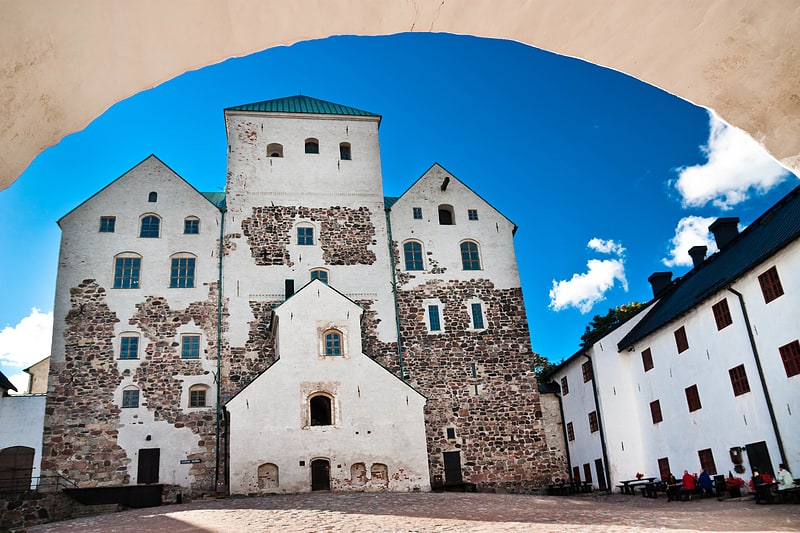
Also known as: Turun linna
13th-century castle with history museum. Turku Castle is a medieval building in the city of Turku in Finland. Together with Turku Cathedral, the castle is one of the oldest buildings still in use and the largest surviving medieval building in Finland. It was founded in the late 13th century and stands on the banks of the Aura River. The castle served as a bastion and administrative centre in Eastland, as Finland was known during its time as a province of Sweden. Only once did the castle figure in the defence of the realm, when Russian invaders from Novgorod destroyed Turku in 1318. It more frequently played a role in internal struggles for power within Sweden and the Kalmar Union. The castle's heyday was in the mid-16th century during the reign of Duke John of Finland and Catherine Jagellon. That was when the Renaissance Floor and King's and Queen's hall were built, along with other features. It lost its status as an administrative centre in the 17th century after Per Brahe's period as governor-general of Finland came to an end. Turku castle is today Finland's most visited museum, with attendance reaching 200,000 in some years. In addition, many of the larger rooms are used for municipal functions.[1]
Address: Turku, Linnankatu 80, FI-20100 Turku, Finland
Wäinö Aaltonen Museum of Art
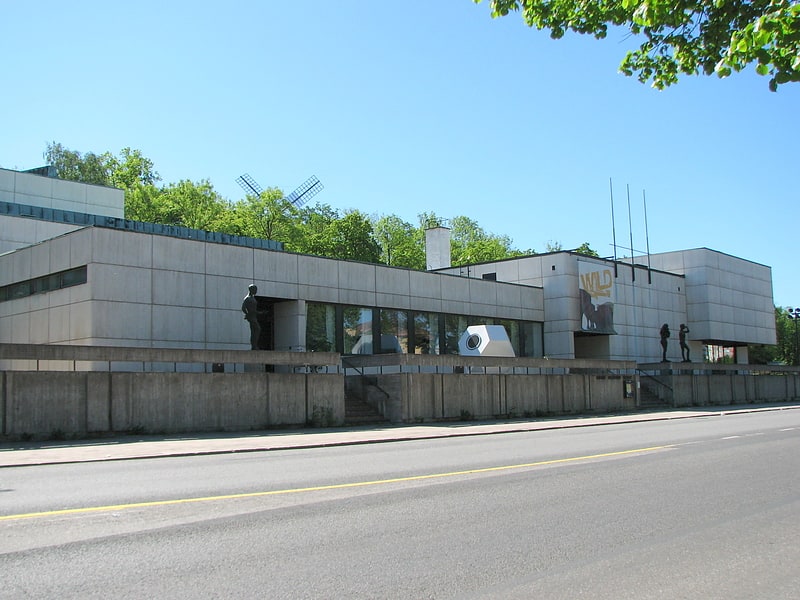
Also known as: Wäinö Aaltosen museo
1960s-style museum of contemporary art. Wäinö Aaltonen Museum of Art or WAM for short, is an art museum in central Turku, Finland dedicated especially to modern art. The museum is located on the east bank of the Aura River. The permanent exhibition is based on the art collection of the City of Turku, which includes a large collection of works by Finnish artist and sculptor Wäinö Aaltonen. Temporary exhibitions focus on Finnish and international modern art.[2]
Address: Itaeinen Rantakatu 38, 20810 Turku (Keskusta)
Turku Cathedral

Also known as: Turun tuomiokirkko
Landmark 700-year-old church and museum. Turku Cathedral is the only medieval basilica in Finland and the Mother Church of the Evangelical Lutheran Church of Finland. It is the central church of the Lutheran Archdiocese of Turku and the seat of the Lutheran Archbishop of Finland, Tapio Luoma. It is also regarded as one of the major records of Finnish architectural history.
Considered to be the most important religious building in Finland, the cathedral has borne witness to many important events in the nation's history and has become one of the city's most recognizable symbols. The cathedral is situated in the heart of Turku next to the Old Great Square, by the river Aura. Its presence extends beyond the local precinct by having the sound of its bells chiming at noon broadcast on national radio. It is also central to Finland's annual Christmas celebrations.
The cathedral was originally built out of wood in the late 13th century, and was dedicated as the main cathedral of Finland in 1300, the seat of the Catholic bishop of Turku. It was considerably expanded in the 14th and 15th centuries, mainly using stone as the construction material. The cathedral was badly damaged during the Great Fire of Turku in 1827, and was rebuilt to a great extent afterwards.[3]
Address: Tuomiokirkonkatu 1, 20500 Turku (Keskusta)
Logomo
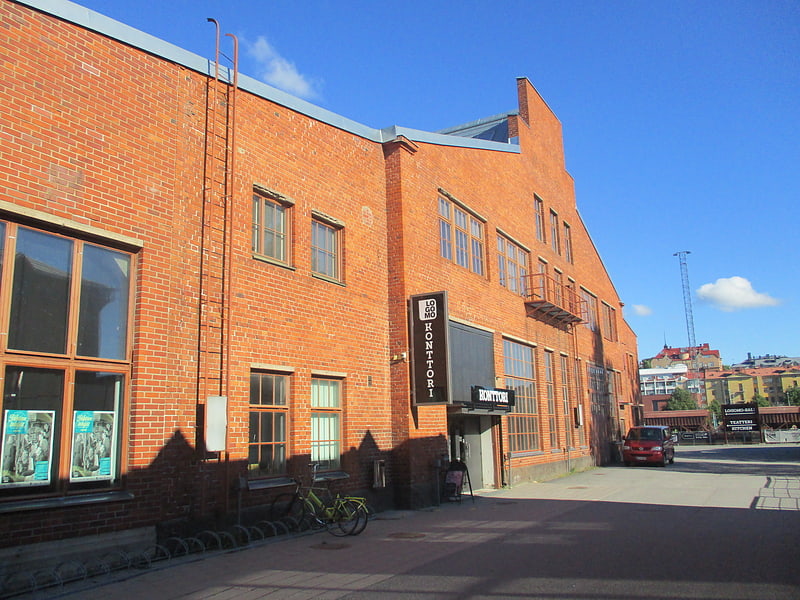
Event venue in Turku, Finland. Logomo is an old VR machine shop and a current cultural venue in Turku in close proximity to the Turku railway station. The building includes galleries, stages, a restaurant, as well as working spaces for businesses and artists. The Logomo centre, Byrå and Konttori facilities house more than 400 working employees and over 70 companies. The building was opened in 2011 as a part of the Turku European Capital of Culture festivities.
The oldest part of the building was built in 1876 as a machine shop for the state railway monopoly VR. Since then, it has been expanded several times and in 2011 it was renovated to function as the main venue for the Turku European Capital of Culture festivities. The opening exhibitions were: "Alice in Wonderland" photographic display, Tom of Finland retrospective, "Only a game?" football themed exhibition by UEFA, video installations by Eija-Liisa Ahtila and Isaac Julien, and an exhibition on fire by Heureka "Fire!Fire!".[4]
Address: Köydenpunojankatu 14, Turku (Länsikeskus)
Luostarinmäki
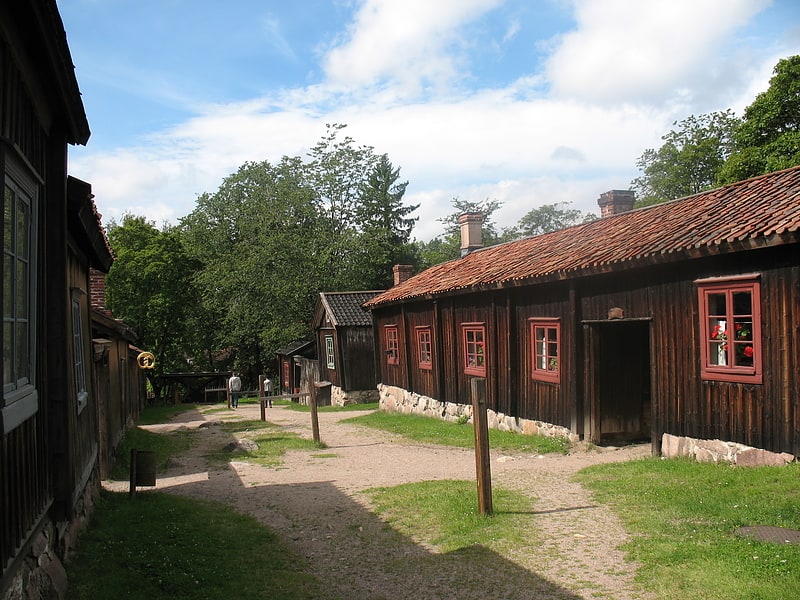
Also known as: Luostarinmäen käsityöläismuseo
Open-air handicrafts with history museum. Luostarinmäki Handicrafts Museum is an open-air museum in Turku, Finland.[5]
Address: Vartiovuorenkatu 2, 20700 Turku (Keskusta)
Turku Orthodox Church

Also known as: Turun ortodoksinen kirkko
Orthodox church in Turku, Finland. Turku Orthodox Church or the Church of the Holy Martyr Empress Alexandra is the main church of the Turku Orthodox parish located at the northeast corner of the Turku Market Square along the Yliopistonkatu street in Turku, Finland. The church was built under plans drafted by architect Carl Ludvig Engel and was ordered by Nicholas I of Russia on 5 January 1838. Construction, which began in 1839, cost 67,886 rubles and was completed in 1845. The church was consecrated on 2 September 1845. The church was dedicated to Alexandra, the spouse of Diocletian who had publicly become Christianised and suffered a martyr's death on 23 April 303. The choice of patron saint may have been due to Nicholas I's wife's name, Aleksandra Feodorovna.
Most of the icons of the iconostasis come from Valaam Monastery.
The Turku Orthodox church cemetery and cemetery chapel are located in Vasaramäki and there are other parish sanctuaries in Rauma and Salo.[6]
Address: Yliopistonkatu 19, 20100 Turku (Keskusta)
Sibelius Museum
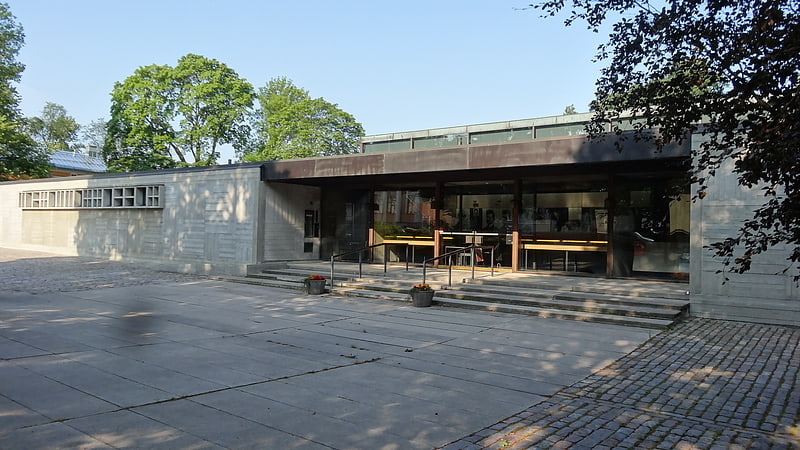
Also known as: Sibelius-museo
Museum in Turku, Finland. The Sibelius Museum is a museum of music, named after the Finnish composer Jean Sibelius. The museum is located close to Turku Cathedral in the historical city centre of Turku on the southwest coast of Finland. It is the only museum devoted to music in Finland. The museum houses a wide collection of historical music instruments from around the world. The archives of the museum include documents The museum was first founded during the 1920s as a seminar for the Department of Musicology at Åbo Akademi University, and has later developed into its own department. The Museum is currently organised and funded by the Åbo Akademi Foundation. The current building was built and opened in 1968 and it was designed by architect Woldemar Baeckman.[7]
Address: Piispankatu 17, 20500 Turku (Keskusta)
Qwensel House
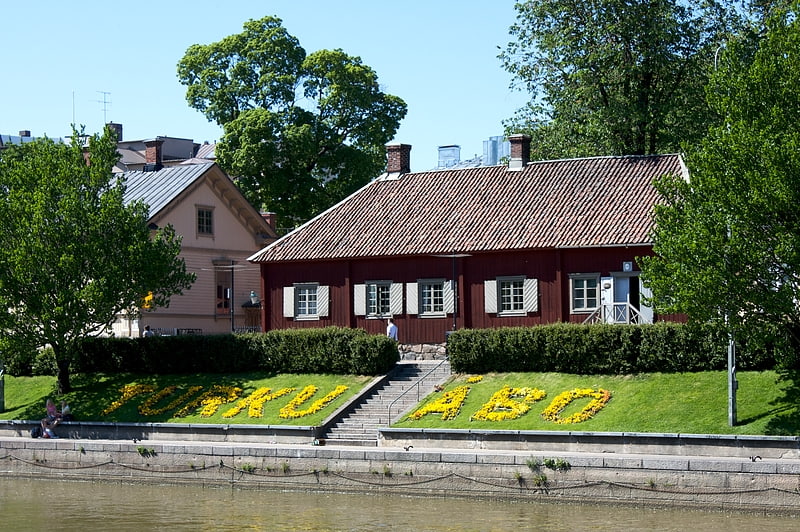
Also known as: Qwenselin talo
The Qwensel House is the oldest wooden house in Turku, Finland. It is bourgeois housing from the autarchic times that has survived in its entirety. The house was built approximately in the year 1700 in an area that was reserved for the nobility in the city plan made up by Peter Brahe in 1652. Today, the Qwensel House operates as the Turku Pharmacy Museum and café.[8]
City Hall

Also known as: Turun kaupungintalo
City or town hall in Turku, Finland. Turku City Hall is a Neo-Renaissance building located on the bank of the Aura River in Turku, Finland. The City Council of Turku convenes at Turku City Hall. The Mayor used to work in an Art Nouveau building near to the City Hall, the Turku City Office until 2011.
It was originally designed by Charles Bassi from 1810-1811 as the restaurant Seurahuone. The building survived the Great Fire of Turku in 1827. It was redone 1879-1883 as the city hall under plans by Frans A. Sjöström.
The first floor used to have the register office of Turku up until 1975 and Turku district court until 1997. After the district court of Turku moved to the new Turku courthouse, the first floor was replaced by work, meeting and legislative spaces in 1999. The second floor of the building is decorated with gold and massive crystal crowning. The wing of the building, located on Aurakatu 4, is for city council groups' rooms and travel agency services.
The public can enter the building during specific events such as Turku Day. The public is also permitted to witness the city council assembly.[9]
Address: Turku, Aurakatu 2
Martin's Church
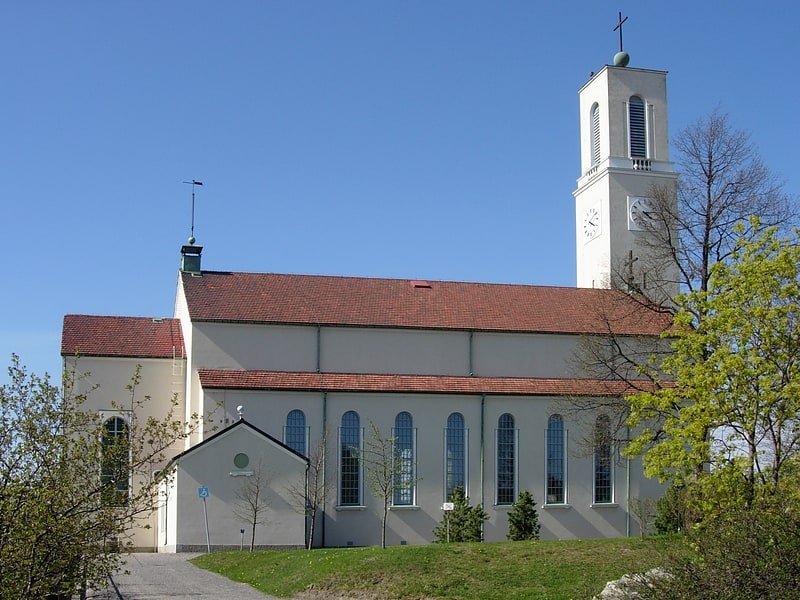
Also known as: Martinkirkko
Church in Turku, Finland. Martin's Church in Turku, Finland is the main church of Martin's parish, founded in 1921. The church was consecrated on the 450th anniversary of the birth of Martin Luther, on November 12, 1933. The designers of the church were the architects Totti Sora and Gunnar Wahlroos. The church represents architectural functionalism. Martin's church is a long church with three aisles with very narrow side aisles. The church has a functional and singular practicality of its own. The barrel-vaulting of the roof is one of the most outstanding features of the church. The altar, the pulpit, and the roof are notable features of architect Sora's work. On the top of the pulpit, the architect has placed a crown. The same theme is featured as a decoration to the hymn list table. The architects have clearly thought of the church as a royal court chamber and for this reason the basic construction is reminiscent of a basilica. The artist Aarre Aaltonen has made five decorative sculptures for the pulpit.[10]
Address: Huovinkatu 5, 20810 Turku (Keskusta)
Old Great Square
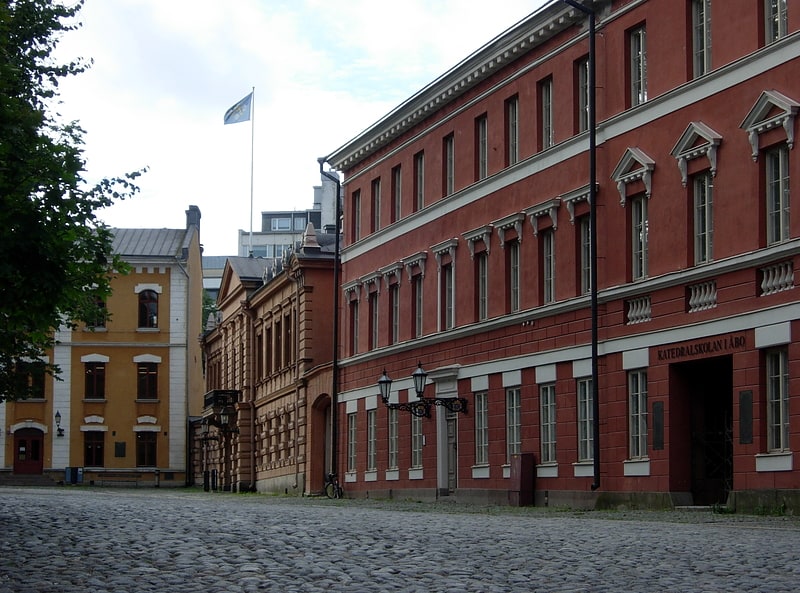
Also known as: Vanha Suurtori
Grand city square with historic trade hub. The Old Great Square is a medieval market square located in the city centre of Turku, Finland. It is located in the II District in very close proximity to Turku Cathedral. The area was the administrative and commercial centre of Turku since the founding of the city in the 13th century up until the Great Fire of Turku.
Today, there are buildings alongside the Old Great Square, but only on the southern side because the blocks on the northern side changed to Porthaninpuisto after the fire. There are four historical buildings which the City of Turku restored for cultural use: the Brinkkala Mansion, Old Town Hall, Hjelt Mansion and Juselius Mansion. The buildings were mainly constructed after the fire and represent neoclassicism.[11]
Address: Vanha Suurtori 7, Turku (Keskusta)
Aboa Vetus & Ars Nova
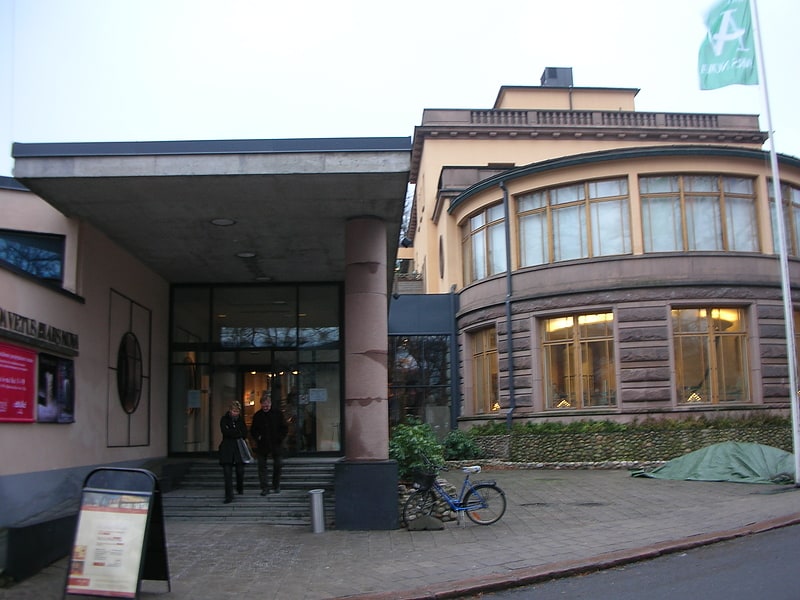
Aboa Vetus and Ars Nova is a museum in central Turku, Finland. The museum is housed in a building known as the Rettig palace, originally built in 1928. Aboa Vetus displays portions of the city dating back to medieval times, while Ars Nova is a museum of contemporary art.
The museum was first opened in 1885 as two independent museums. Originally, plans were for only Ars Nova, the contemporary art museum, but during its construction a number of structures and artifacts dating back to the Middle Ages were discovered, and the archaeological excavation that was commissioned eventually transformed into Aboa Vetus. The two museums were combined in 2004 and Aboa Vetus & Ars Nova is now among the most popular tourist venues in the entire region of Southwest Finland.[12]
Address: Itaeinen Rantakatu 4-6, 20700 Turku (Keskusta)
Myllysilta
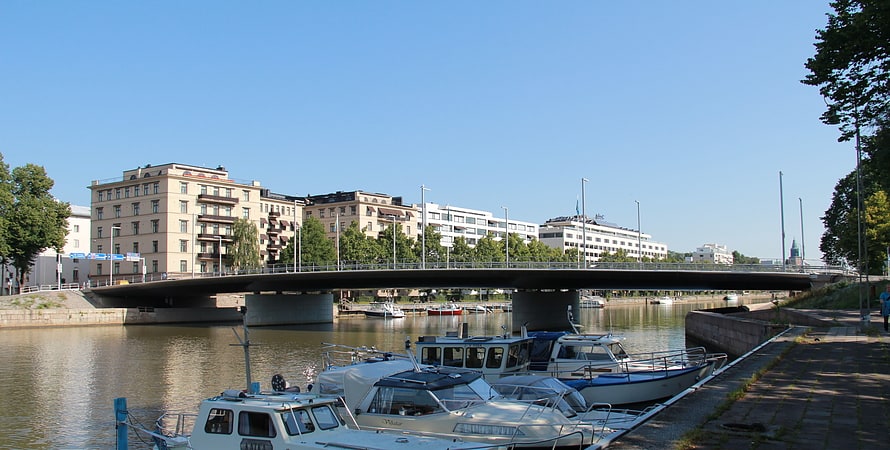
Girder bridge. The Myllysilta is a steel girder bridge crossing the Aurajoki in the middle of the city of Turku in Finland. The bridge was opened on 19 September 2011. Only two of four lanes were first in use, the bridge was totally completed on 29 November 2011, even though some landscaping and stone work were completed in 2012. The bridge connects Turku's IV district to the VII district, and has four westbound lanes, and a sidewalk on northern side. It is a one-way-route from east to west, while the nearby Martinsilta bridge goes west to east.[13]
Mikaelinkirkko
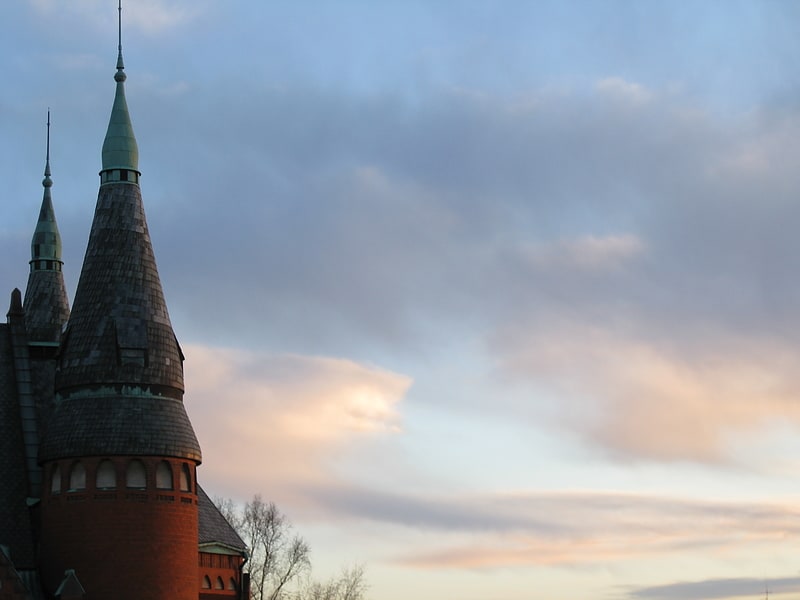
Neo-Gothic church with a 252-foot spire. Michael's Church is a church situated in central Turku. It is named after Archangel Michael and was finished in 1905. It dominates the western skyline of the city of Turku was designed by Professor Lars Sonck and is one of the most popular wedding churches in Turku being able to seat 1,800 people. When Sonck won the competition for the church in 1894, he was only a 23-year-old architectural student. Michael's Church is older than Michael's parish. The parish only dates back to 1921.[14]
Address: Puistokatu 16, 20100 Turku (Keskusta)
Vartiovuori Observatory
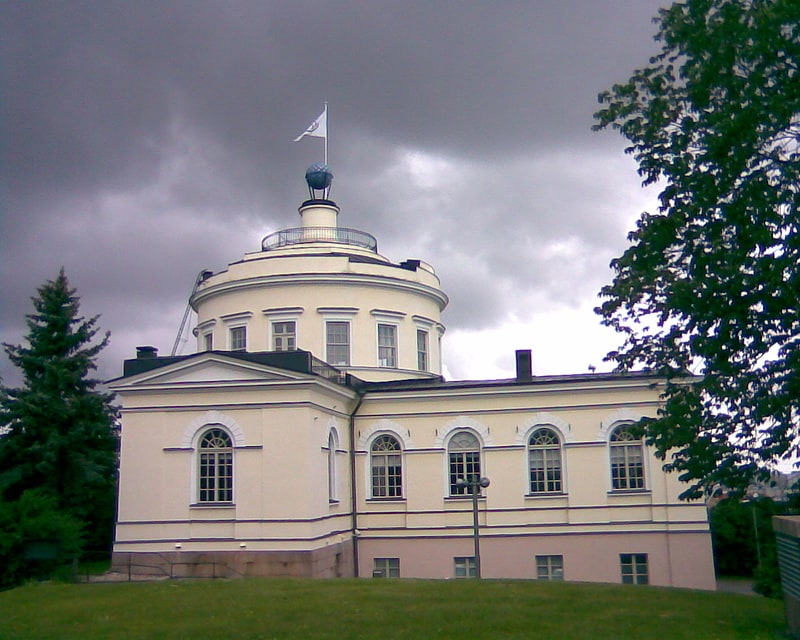
Also known as: Vartiovuoren tähtitorni
Astronomical observatory. Vartiovuori Observatory is a former observatory in Turku, Finland. The observatory, designed by Carl Ludvig Engel, was originally built for the Royal Academy of Turku. The neoclassical building was completed in 1819. The observatory is situated atop the Vartiovuori hill, and it is clearly visible from different sides of the city centre.
The observatory became defunct in 1836. Today the building is owned by the Åbo Akademi University Foundation and houses the foundation's offices.[15]
Address: Kaskenkatu 2-4, 20700 Turku (Keskusta)
Market Square
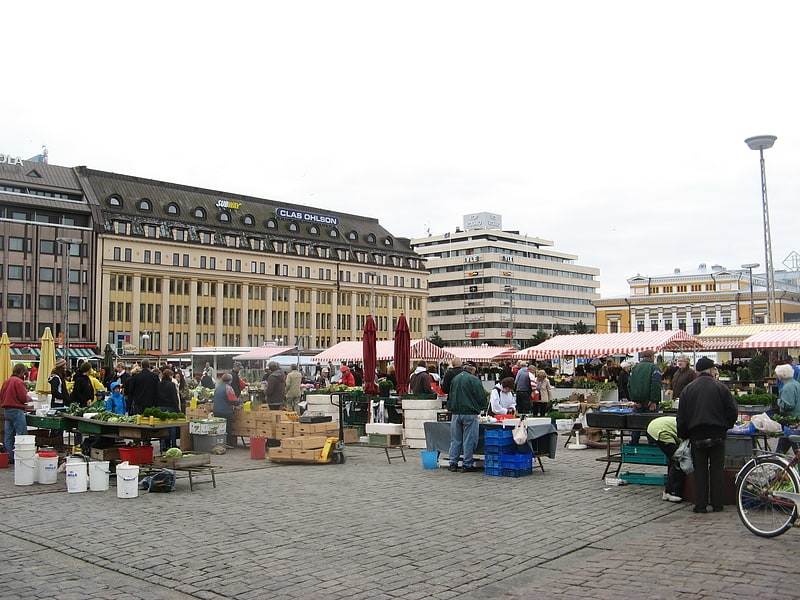
Also known as: Turun kauppatori
Market in Turku, Finland. The Market Square is a city square in the city of Turku, in Finland. It is located in the city's VI District, and is generally considered the city's central square. It hosts a lively market on weekdays, and there are several cafés and restaurants on the square.
The buildings around the Market Square are also part of the city's central business district. They include, for instance, the Hansa and Forum shopping centres, the Wiklund department store, an Orthodox church, a private medical clinic, and several instances of media such as an office of Finland's major newspaper Helsingin Sanomat, locally most significant newspaper Turun Sanomat and Yle.[16]
Suomen Joutsen
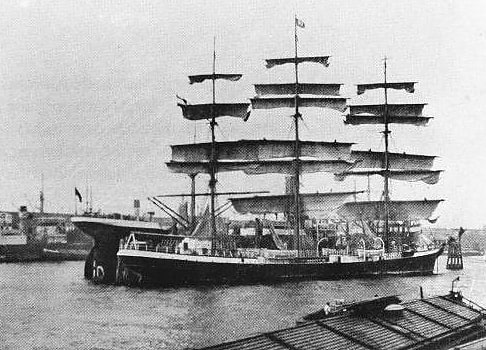
Sailing frigate completed in 1902. Suomen Joutsen is a steel-hulled full-rigged ship with three square rigged masts. Built in 1902 by Chantiers de Penhoët in St. Nazaire, France, as Laënnec, the ship served two French owners before she was sold to German interest in 1922 and renamed Oldenburg. In 1930, she was acquired by the Government of Finland, refitted to serve as a school ship for the Finnish Navy and given her current name. Suomen Joutsen made eight long international voyages before the Second World War and later served in various support and supply roles during the war. From 1961 on she served as a stationary seamen's school for the Finnish Merchant Navy. In 1991, Suomen Joutsen was donated to the city of Turku and became a museum ship moored next to Forum Marinum.[17]
Address: Linnankatu 72, 20100 Turku (Keskusta)
Åbo Svenska Teater
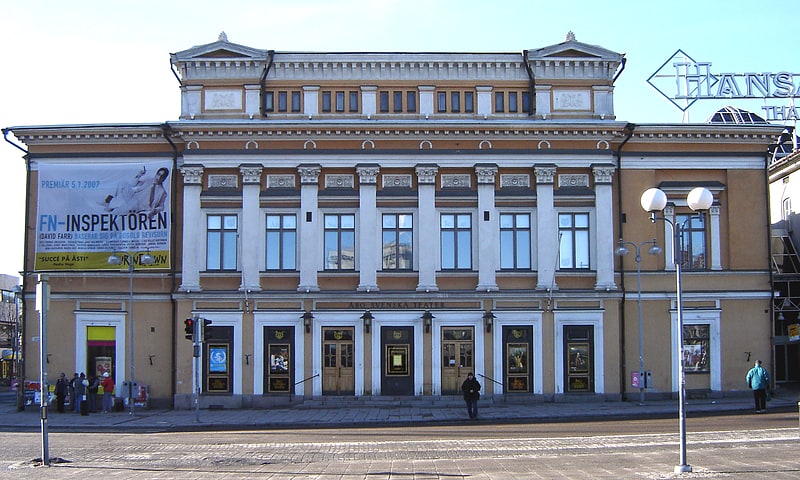
Also known as: Turun ruotsalainen teatteri
Theatre in Turku, Finland. Åbo Svenska Teater is a Finland-Swedish theatre in the city of Turku in Finland and the oldest theatre in the country, founded in 1839. The building itself is also the oldest still functioning theatre house in Finland. The name means "The Swedish theatre of Åbo"; Åbo is the Swedish name of the city of Turku.[18]
Address: Turku, Eerikinkatu 13, 20100
Harmonia Sculpture

Also known as: Harmonia
Sculpture by Achim Kühn. Harmonia or Harmoni is a fountain sculpture by Achim Kühn. It is located in the Aura River in Turku, Finland.[19]
S/s Ukkopekka
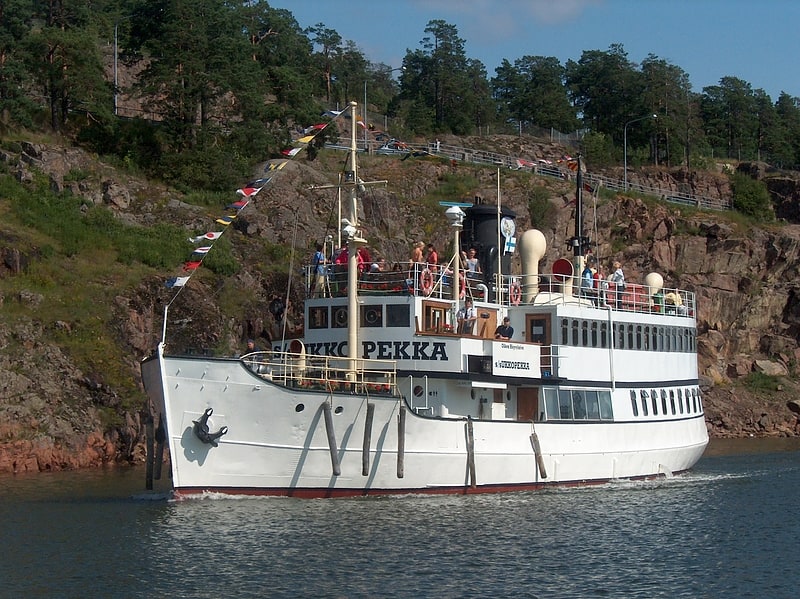
Also known as: S/S Ukkopekka
SS Ukkopekka is a Finnish steamship in service as a tourist and heritage attraction.[20]
Address: Linnankatu 40, 20100 Turku (Keskusta)
Forum Marinum
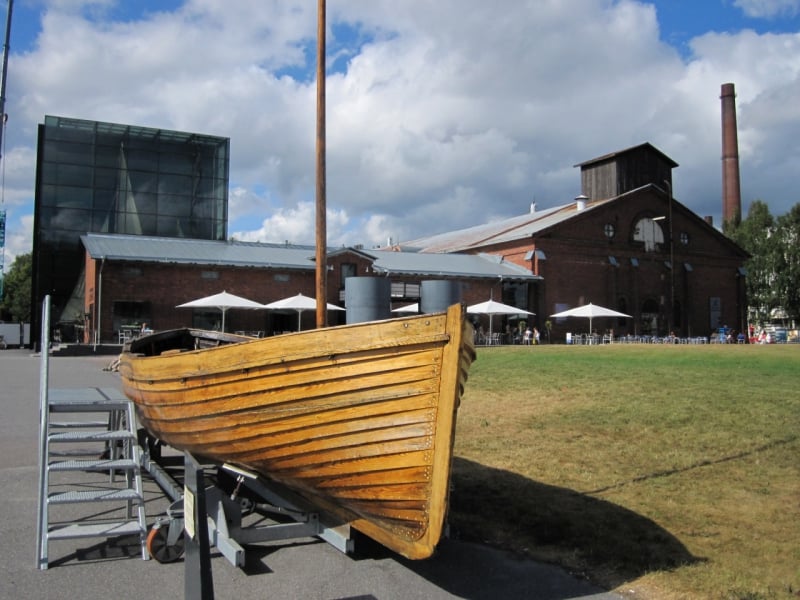
Museum in Turku, Finland. Forum Marinum is maritime museum located in Turku, Finland.[21]
Address: Linnankatu 72, 20100 Turku (Keskusta)
Turun konserttitalo
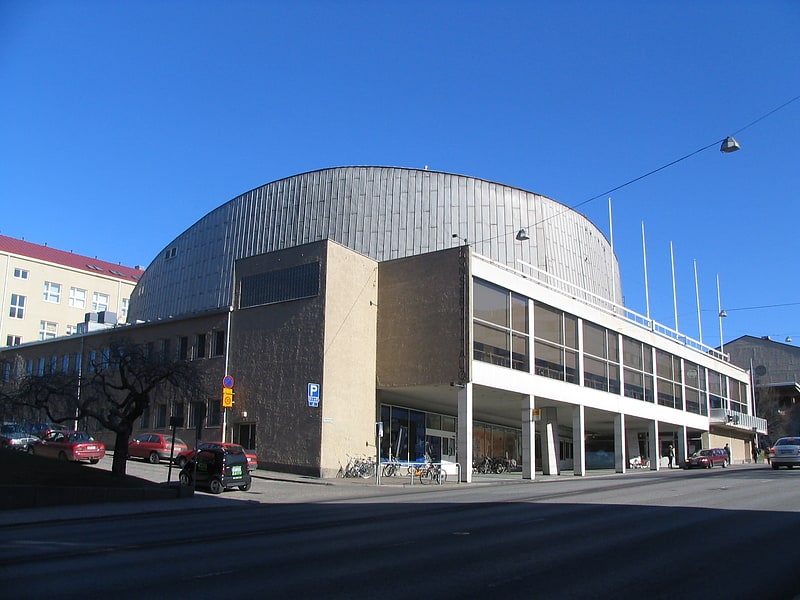
Concert hall in Turku, Finland. Turku Concert Hall is located on the north side of the Puutori market square in Turku, Finland. The hall was designed by architect Risto-Veikko Luukkonen and constructed in 1952. It was the first concert hall in Finland. The Turku Philharmonic Orchestra primarily performs at the concert hall but there are many top international venues that perform there as well.
There is one auditorium in the building and it was designed for concerts. Its audience capacity is 1,002. The acoustics are excellent. In addition to concerts, conferences, plays, fairs and other events take place in the hall.[22]
Address: Turku, Aninkaistenkatu 9
Turku City Theatre
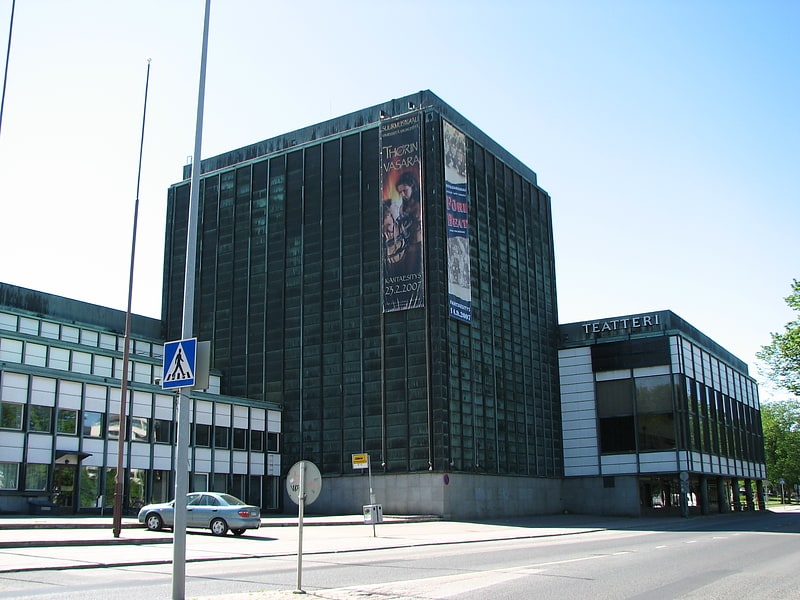
Also known as: Turun kaupunginteatteri
Theatre in Turku, Finland. Turku City Theatre is a theatre in the City of Turku. It was founded in 1946, when "Turun Teatteri" and "Turun Työväen Teatteri" merged. It was the oldest fully municipality owned theatre in Finland, until 2014, when it became a joint-stock company owned by the City of Turku.[23]
Address: Turku, Itäinen Rantakatu 14, 20800
Turku City Library
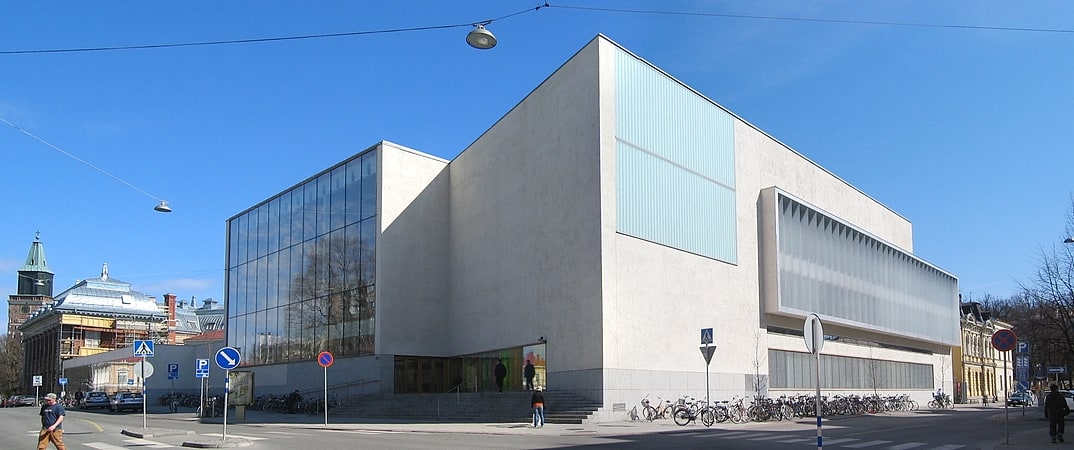
Also known as: Turun kaupunginkirjasto
Public library. Turku City Library is a municipal public library in Turku. The Main Library is located in the VI District at the city centre. The Turku City Library also operates several branch libraries and two mobile libraries. It is part of the Vaski library network, which is a consolidation of 18 public libraries in the Finland Proper region.
The library traces its roots to the 1860s, when a privately funded people's library and an academic oriented city library were established in Turku. The municipality of Turku soon took over operating both libraries, and in 1912 they were merged to form the Turku City Library.
The Turku City Library has a regional development responsibility in the regions of Finland Proper and Satakunta. The libraries with regional development responsibility are tasked with developing the working environment of the area's public libraries and updating the staff's skills and knowledge.[24]
Address: Linnankatu 2, 20100 Turku (Keskusta)
Turku Market Hall
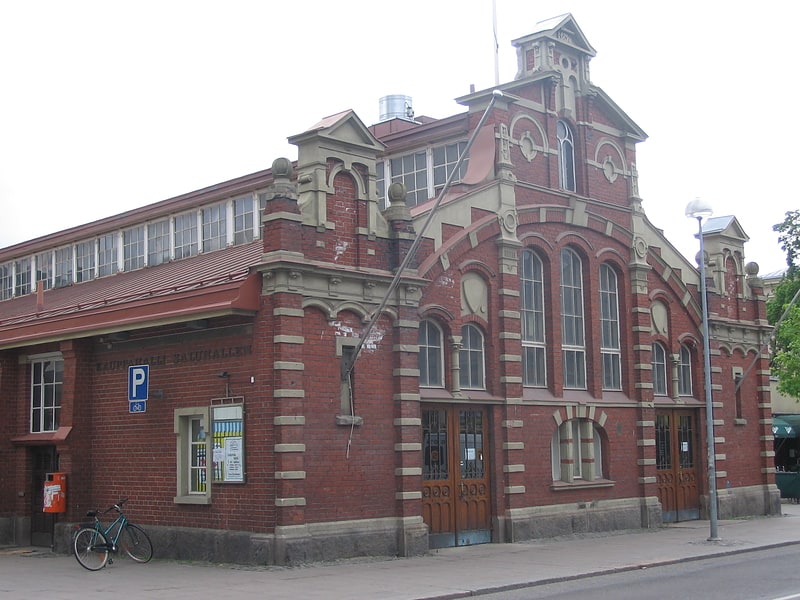
Also known as: Turun kauppahalli
Turku Market Hall is the second oldest market hall in Finland, and it was opened in 1896 in Turku.[25]
Address: Turku, Eerikinkatu 16
Turku Cemetery
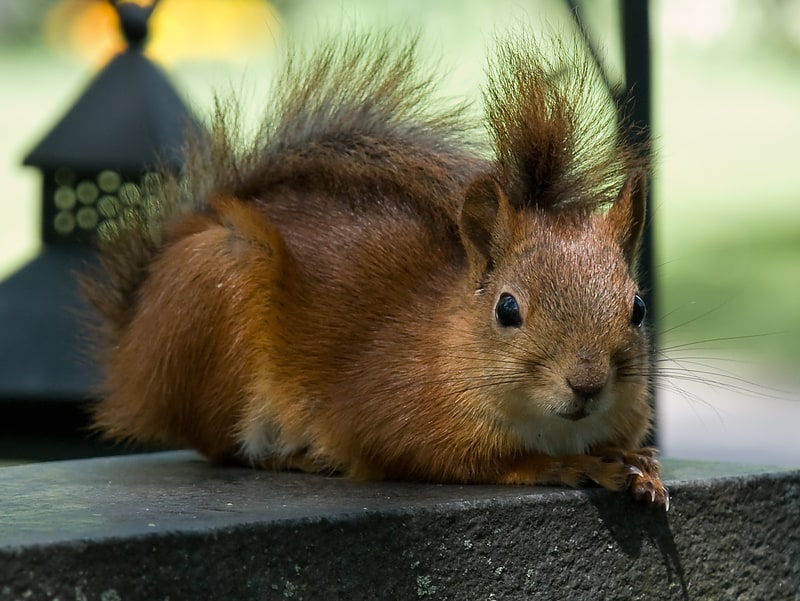
Also known as: Turun hautausmaa
Cemetery in Turku, Finland. Turku Cemetery is a cemetery inaugurated in 1807 and located in Vasaramäki on the south-eastern outskirts of the city of Turku.
The drawings of the cemetery has been prepared by the architect Charles Bassi. In the cemetery there are two chapels complexes. The Resurrection Chapel or Ylösnousemuskappeli/Uppståndelsekapellet was completed in 1941 by architect Erik Bryggman. The Heliga Korsets chapel and crematorium is inaugurated in 1967 by architect Pekka Pitkänen.
The first buried person in the cemetery was William Archibald Cramp, who died in 1806 on his way from St. Petersburg to Turku.[26]
Föri

Ferry. Föri is a ferry running across the River Aura in Turku, Finland. The ferry was completed in 1903, and it is the oldest vehicle still in daily operation in Finland. Föri is also the only municipally owned ferry in Finland. The name "Föri" is derived either from the Swedish word "färja", or from the English word "ferry".
If the river freezes over and the ice is thicker than 30 cm, the ferry is replaced by an ice bridge.[27]
Address: Lantinen Rantakatu 53, 20100 Turku (Keskusta)
Maarian kirkko
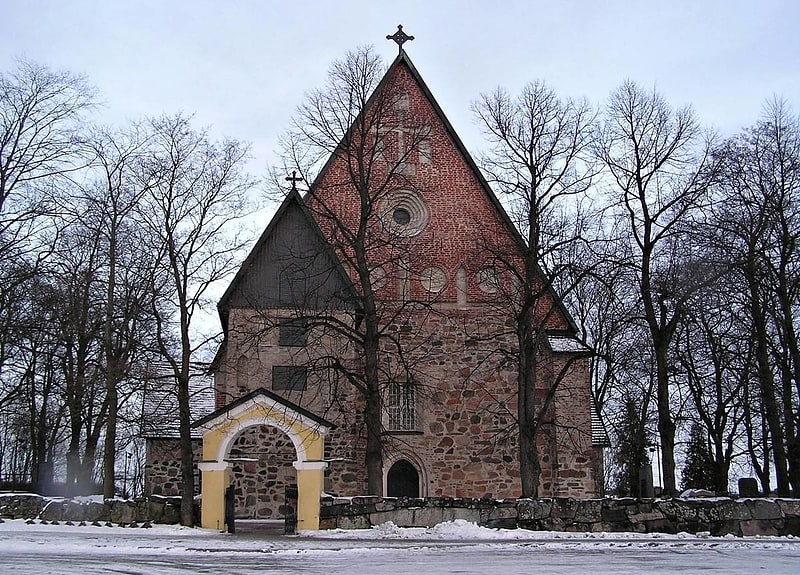
Church in Turku, Finland. St. Mary's Church is a medieval stone church located in Maaria, in Turku, Finland. There are no records as to when the present church was built, but the work was probably started in the mid or late 15th century. According to Markus Hiekkanen, the church was probably built in the 1440s, on the basis of the style of the closets; the gables were constructed about 50 years later. There are medieval limestone paintings on the walls, which are not common to other places in Finland. The most valuable artefacts are the wooden altar cabinet and a large altarpiece depicting Christ on the cross.[28]
Address: Maunu Tavastin katu 2, 20380 Turku (Nummi-Halinen)
MS Bore
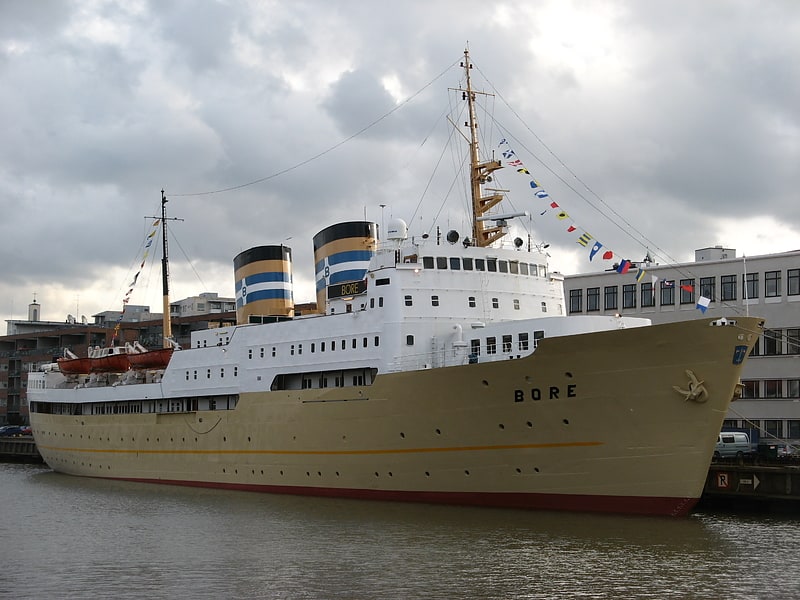
Also known as: M/S Kristina Regina
Museum in Turku, Finland. MS Bore is a combination museum and hotel ship docked permanently in Turku, Finland. She was originally built in 1960 by Oskarshamn shipyard, Oskarshamn, Sweden as the car/passenger ferry SS Bore for Steamship Company Bore, Finland, then the last commercial steam ship built in Scandinavia and the first ferry on the route between Finland and Sweden where cars could drive aboard. She was later known as SS Borea, before being rebuilt as a cruise ship in 1988. 1988 to 2010 she was owned by the Finnish shipping company Kristina Cruises and known as MS Kristina Regina until she was retired because she did not comply with new safety regulations.[29]
Address: Linnankatu 72, 20100 Turku (Keskusta)
Puutori
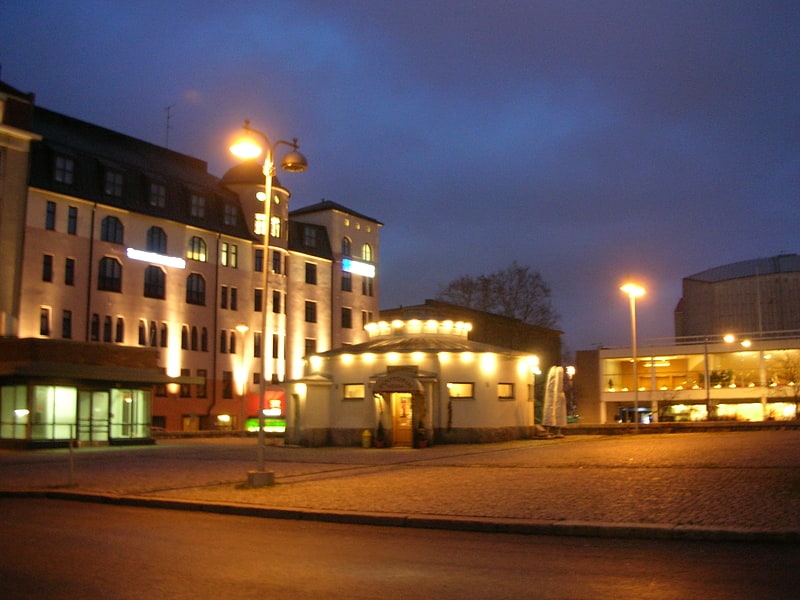
Market in Turku, Finland. Puutori is a market square in the city centre of Turku, Finland. It measures at approximately 100 by 40 metres. It is bordered by Aninkaistenkatu/Aningaisgatan, Maariankatu/Mariegatan, Brahenkatu/Brahegatan and Sibeliuksenkatu/Sibeliusgatan. Today, it has no regular market square activity but Puutorin puolesta ry organises different events there each year. Located at one end of the square are Ystävyydenpuisto and Wäinö Aaltonen's statue Kun ystävyyssuhteet solmitaan, which was designed in 1955 in honour of the friendship between Turku and Göteborg. There are also small cafés and shops surrounding Puutori, as well as a pet store.[30]
St. Catherine's Church

Also known as: Pyhän Katariinan kirkko
Church in Turku, Finland. St. Catherine's Church is located in Nummi, a suburb of Turku, Finland, in the same district as Turku Student Village. It represents old medieval stone church building tradition. Although it was completely destroyed and has undergone several renovations, it has preserved something of its original appearance and retains the basic plan of a medieval Finnish church. The construction was begun in the 1340s; the sacristy was completed first and the church later. Bishop Hemming and Bishop Thomas of Växjö consecrated the church on 22 January 1351.
The church was named after its patron saint Catherine of Alexandria in 1991. It used to be located in the region of Kaarina and was known was Kaarina Church. The first mention of Saint Catherine of Alexandria was in a signet with which vicar Jacob of Nummi confirmed the then episcopal election. Nummi, which surrounded the church, however became a part of Turku in 1939. When Kaarina became its own parish, the church changed its name to St. Catherine's Church.[31]
Address: Kirkkotie 46, 20540 Turku (Nummi-Halinen)
Martinsilta
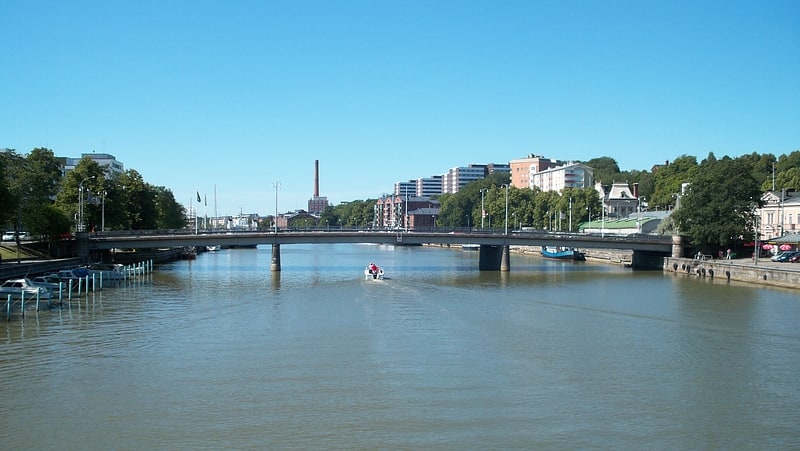
Beam bridge. Martinsilta is a beam bridge spanning the Aurajoki river in Turku, Finland. It was built in 1940, although a proposed bridge appeared on its present location already in the city plan that Carl Ludvig Engel created after the Great Fire of Turku of 1827. The bridge is 104.5 metres in length.
The bridge is a one-way bridge crossing from Linnankatu to Itäinen Rantakatu in a south-southeast direction. The nearby Myllysilta bridge carries one-way traffic in the opposite direction. In 2010, due to the collapse of the Myllysilta bridge, Martinsilta was temporarily turned into a two-way bridge until Myllysilta was rebuilt and opened to traffic.[32]
Iso-Heikkilä Observatory
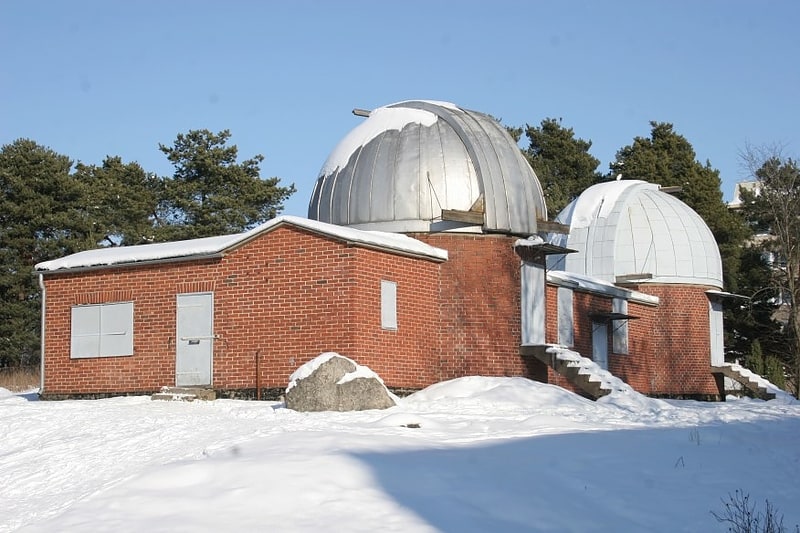
Also known as: Iso-Heikkilän tähtitorni
Astronomical observatory. Iso-Heikkilä Observatory is an amateur astronomical observatory used by a local amateur astronomical association, Turun Ursa ry in the Iso-Heikkilä district of Turku, Finland.
Referred to as Turku Observatory (062) by the Minor Planet Center, it was previously operated by the University of Turku from 1937 to 1972, and is the observatory where several Finnish discoverers of minor planets made their observations.[33]
Address: 7 Pohjantähdentie, Turku (Keskusta)
St. Bridget and Blessed Hemming Church

Also known as: Pyhän Birgitan ja Autuaan Hemmingin kirkko
Catholic church in Turku, Finland. St. Bridget and Blessed Hemming Church is a parish of the Roman Catholic Church in Turku, Finland. The church building, completed in 1966, is located in the center of Turku in Ursininkatu. It was consecrated in honor of St. Bridget of Sweden and bishop Hemming of Turku.
It is part of a group of Catholic parish buildings that were completed after 1966, including an administrative office and a residence. The Catholic history of Turku goes back over 80 years, with 1,194 members as of 2005, most of whom have foreign backgrounds (notably immigrants from Southeast Asia and Poland). The parish priest Father Peter Gebara SCJ (Brotherhood of the Sacred Heart of Jesus or Jeesuksen Pyhän Sydämen Veljeskunta), a native of Poland. The Church of Turku also has links to the Order of St. Brigid (birgittalaisluostari), a Catholic convent.[34]
Turku Synagogue

Also known as: Turun synagoga
Synagogue in Turku, Finland. Turku Synagogue in the city of Turku is one of the two synagogues in Finland. Located in the VII District, the synagogue is used by the Jewish community of Turku. The synagogue building, designed by architects August Krook and J.E. Hindersson, was completed in 1912.[35]
Address: Tuureporinkatu 10, 20100 Turku (Keskusta)